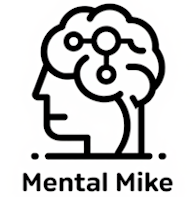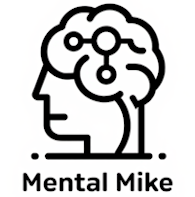Relapse is often treated like a dirty word in recovery circles. It’s whispered in shame, treated as evidence of weakness or self-sabotage. But this mindset, this punitive lens, only reinforces the very cycles of despair and disconnection that relapse seeks to interrupt. In the Unified Flux Model (UFM), we offer another view: relapse is not failure - it is feedback. It’s the nervous system, the energy field, and the deep memory of the self sending up a flare. Not to be punished, but to be understood.
This article explores relapse not just as a behavioral event, but as an energetic expression - a temporary collapse in coherence that carries profound information about what still needs to be seen, felt, and integrated. When understood correctly, relapse becomes an invitation back into alignment, not an exile from progress.
What Is Relapse, Really?
From a clinical standpoint, relapse is defined as the return to substance use after a period of abstinence. But this behavioral definition fails to account for the emotional, neurological, and energetic signatures that precede the act. In fact, most relapses begin long before the drink, the hit, the binge. They begin in subtle moments:
- The return of emotional numbness
- The shrinking of spiritual connection
- The breakdown of internal rhythm
- The rise of internal chaos or craving without containment
Neurobiologically, relapse correlates with dysregulation in the prefrontal cortex (loss of executive control), amygdala (fear reactivity), and the reward system (dopamine sensitivity) (Volkow et al., 2016). Energetically, we describe this in UFM as a breakdown in coherence; when the frequency of survival overrides the frequency of healing.
Relapse as Energetic Incoherence
The UFM approach frames relapse as an energetic regression, a return to a former energetic pattern that no longer matches the conscious self’s desired frequency. This misalignment often stems from unresolved trauma, unmet needs, or overwhelmed systems that revert to old loops as a form of protection.
Here’s what it might look like:
- A person moves through life at a new, higher frequency of clarity and connection
- An old relational wound is triggered
- Their nervous system becomes dysregulated (hyperarousal or collapse)
- Their energy leaks, and old impulses resurface
- The body “remembers” that substance once quieted this overwhelm
- Relapse occurs - not from lack of willpower, but from lack of containment
Understanding this helps remove moral blame. The person hasn’t failed. Their energetic scaffolding simply couldn’t yet hold the weight of the trigger. The relapse is not a fall. It is a flashpoint, revealing exactly where more coherence is needed.
What the Body and Energy System Are Saying
When a person relapses, the body isn’t “betraying” them, it’s communicating. It’s saying:
- “I’m overloaded.”
- “I’ve reached the edge of what I know how to hold.”
- “Something in me still believes I need this to survive.”
These signals can’t be accessed when relapse is viewed through shame. Shame shuts down curiosity. It collapses the energetic field and sends the person deeper into isolation - feeding the loop. By contrast, a trauma-informed, energetically-aware recovery path holds relapse with precision and compassion.
The question becomes not, Why did you fail? but rather:
The question becomes not, Why did you fail? but rather:
- What overwhelmed your capacity for coherence?
- Where did your energy distort?
- What is this relapse trying to help you feel, protect, or avoid?
The Energetics of Shame vs. Coherence
Shame is one of the most energetically destabilizing emotions in the human experience. It narrows attention, distorts perception, and fractures internal trust. Research shows that shame activates threat centers in the brain and reduces heart rate variability, making self-regulation more difficult (Tangney et al., 2007; Siegel, 2012). In energetic terms, shame closes the field. It fragments the person into attacker and attacked, self versus self. No wonder relapse thrives in that environment!
In UFM, we practice what we call returning to coherence after relapse. This includes:
- Energetic accountability: Not punishing the act, but tracing it to the point of collapse with radical honesty.
- Ritual re-alignment: Grounding practices, meditations, and breathwork designed to close energetic leaks and restore containment.
- Narrative reintegration: Helping the client reframe the relapse as a signal event, not an identity marker.
- Trauma tracework: Gently exploring what part of the self felt unsafe, invisible, or overwhelmed—bringing compassion and containment to that part.
- Rhythmic restoration: Rebuilding routine, movement, and self-care rituals that stabilize the field and prevent future collapse.
What Clients Say in the Aftermath of Relapse
In our UFM pilot groups, we saw something powerful: when clients were offered tools to understand their relapse as energy collapse, not as weakness, they engaged with recovery in a deeper way. Many said:
- “I felt like I could come back quicker this time.”
- “I didn’t spiral into shame like before.”
- “The relapse actually showed me where I still needed healing.”
And that’s the goal. Not just abstinence, but energetic literacy. When people can read their internal states, they no longer fear relapse, they listen to it.
A New Ethic of Recovery
The old model says: "Relapse is failure."
The Unified Flux Model says: "Relapse is a moment of misalignment. Nothing more."
That doesn’t mean it’s okay to use. It means that relapse is not the opposite of healing. It is part of the diagnostic process. A feedback signal from the nervous system that more coherence, care, or containment is needed. This reframing does more than protect self-esteem. It protects recovery. It helps clients move forward instead of getting stuck in a loop of judgment.
If You’ve Relapsed Recently
You’re not broken. You’re not starting over. You’re not back at square one.
You’ve received a signal. Your system is trying to show you something.
Ask:
- What overwhelmed me?
- What part of me needed attention and didn’t get it?
- What could I try differently next time—not to avoid relapse, but to stay in coherence?
Then breathe. Ground. Begin again.
This is not failure. This is feedback. And you are still on your path.
This is not failure. This is feedback. And you are still on your path.
References
Porges, S. W. (2011). The polyvagal theory: Neurophysiological foundations of emotions, attachment, communication, and self-regulation. W. W. Norton & Company.
Siegel, D. J. (2012). The developing mind: How relationships and the brain interact to shape who we are (2nd ed.). Guilford Press.
Teicher, M. H., & Samson, J. A. (2016). Annual research review: Enduring neurobiological effects of childhood abuse and neglect. Journal of Child Psychology and Psychiatry, 57(3), 241–266. https://doi.org/10.1111/jcpp.12507



